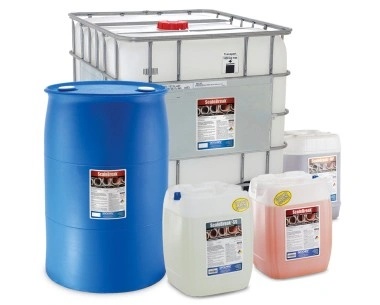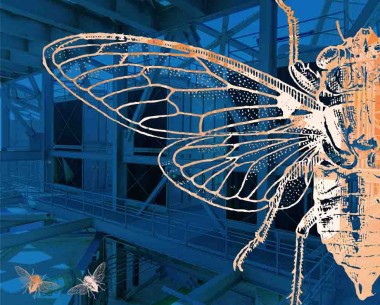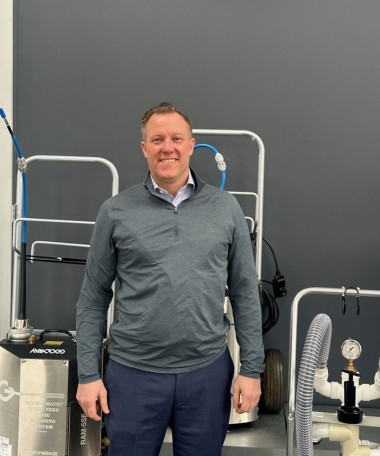New Systems Bring Productivity/Cost Effectiveness to Tubular Parts Cleaning

Goodway Jet Cleaner
Traditionally, cleaning the interiors of tubes, pipes and hose components relied on manual or chemical methods. This applied to both newly manufactured components, requiring the removal of lubricants, chips and swarf before shipping or product assembly and to existing components for routine maintenance procedures.
A tubular furniture manufacturer, for example needed to clean oils and metal swarf from the inside of the tube sections after machining and bending. The standard procedure called for pushing and pulling a clean rag on a wire through the tube. The task, very time consuming, continued until the final rag came out clean. The alternative was to subject the tube to a chemical bath in a soak tank, followed by fresh water pressure rinses.
Today, the manufacturer is able to clean all tube interiors with a pneumatic cleaning gun that uses 90 to 120 P.S.I. shop air to propel foam projectiles through the tube. Gun nozzles and projectiles accommodate tubes from 1/4" to 2" I.D. As a projectile is shot from the gun, it is compressed, loosening and propelling dirt and deposits through the tube. Projectiles are oversized to ensure proper compression for maximum cleaning action. They clean not only curved, but also coiled tubes. These pneumatic cleaning guns are now found throughout a wide range of industries, from food and beverage systems, to processing lines, fuel lines and hydraulic lines and hoses.
These guns have proven to be extremely efficient compared to the manual wire-and-rag cleaning process and are many times faster in completing the task. It is also extremely important to note that they have eliminated costly and potentially people-and-environment harmful chemical bath cleaning.
For OEM companies, where there are frequently required pre-assembly operations such as cutting, crimping, threading, tapping and deburring, it is very important to assure that the tube is thoroughly cleaned before assembly. The projectiles, made of polyurethane in various densities, have the physical properties of compression and flexibility to expand, contract and bend in "fractions of a second" as they are propelled through tubes that can be hundreds of feet long with complex configurations to overcome. There are also fittings to consider, such as JIC couplings on the ends of hydraulic hoses. The projectile must contract and expand through these couplings while accomplishing a thorough cleaning action. In cases of extremely oil and swarf laden tubular components, it may take several projectiles to do the job. But, considering that a projectile can travel the length of a hundred-foot tube or hose, straight or curved, in about one second, even requiring several projectiles, the cleaning process is extremely fast.
While the example used in the tubular furniture manufacturing operation is typical in procedure, the pneumatic-gun-projectile system using a strong jet of air is finding strong acceptance in such high tech applications as aircraft, for hydraulic lines, pharmaceuticals, for cleaning processing equipment before assembly and during formulation changeovers, and for equipment subject to high rotational speeds, such as vulcan spindles, where contamination not removed before final assembly could cause dangerous out-of-balance conditions during operation.
In cleaning tubular components experiencing tougher fouling and contamination, and those over 2" I.D., new rotary brush systems have been replacing chemical cleaning, hydroblasting and labor-intensive rod-and-brush cleaning. The rod-and-brush method is unpleasant and generally put off until cleaning was absolutely essential. This is a two step cleaning method whereby the operator first manually brushes out the tubes, then follows with a flushing of the tubes with a water hose. Often, the residue left in the tube after brushing would dry back onto the tube wall before being flushed.
When speed is important and tubes need scrubbing, newly developed flexible shaft automatic reaming systems mechanically feed the shaft and rotary brush through the tubes at high speed, operating dry or with water flush. Brushes can run the gamut from nylon to brass to stainless steel, depending on the type of tube and degree of cleaning needed. There are even u-tube brushes, wheel brush assemblies, honing tools and buffing tools for tubes and pipes, often used in combination with vacuum systems. Special buffing and brush applications even prepare new tube components for anodizing or plating, remove welding residue, as well as provide manufacturing personnel with the automatic reaming equipment they need to assure the efficiency of such systems as boilers, condensers, heat exchanges, oil coolers and other tubular-based equipment during the fabrication and final assembly.
As the old manual and chemical methods of tube cleaning continue to prove more costly and labor intensive, industry will turn more and more to the new mechanical and pneumatic systems available. This new equipment is rapidly establishing a pronounced state-of-the-art in fast, economical and efficient tube cleaning.






